Game development isn’t linear, and many studios have a version of the same story: Builds fail due to unresolved dependencies, scopes shift during sprints, and cross-functional teams operate in parallel across code, art, design, and QA.
Standard project management tools weren’t built for that.
Meegle is.
Purpose-built for high-performance game teams, Meegle connects your production pipeline end-to-end, from task management and dependencies to real-time visibility and build tracking. Whether you're in pre-prod or prepping for a publisher milestone, Meegle keeps your projects moving forward with less chaos, more clarity, and fewer surprises in your sprints.
Let’s examine the industry’s toughest challenges in game production and show how Meegle turns complexity into momentum, helping your team deliver unforgettable worlds on schedule and within budget.
Game Dev vs. Software Dev: Why Your Team Needs a Specialist Tool
Software development involves modular and sequential features. For example, you might ship a login flow, a database integration, or a new UI component; each one is scoped, tested, and deployed in a linear path.
But in game development, nothing ships in isolation, so fundamentally, it can’t be managed like software development.
Take something as basic as a boss encounter mid-game. It’s not one task but a network of interdependent work:
- Design defines mechanics and pacing
- Engineers build the behavior tree, triggers, and damage logic
- Animators sync attack cycles and hit reactions
- VFX adds tells, particles, and phase transitions
- Audio layers in cues, voice lines, and ambient feedback
- QA can’t validate anything until all of that comes together in a playable build.
Software project management tools don’t model this kind of semantic dependency. They treat everything as discrete, assignable tasks and ignore that gameplay only emerges when multiple disciplines converge, in real time, and often out of order.
Meegle understands that and lets your game dev team:
- Link tasks across disciplines
- Visualize blockers based on creative and technical dependencies
- Track build readiness as a function of content completeness, not a checklist status.
5 Game Dev Nightmares
#1: Siloed teams, Fractured Data
Modern games demand collaboration across programmers, artists, designers, and marketers. Yet when artists work in Figma, developers track tasks in Jira and marketing plans in Excel, version control crumbles. Massive unstructured files (3D models, soundscapes) evolve daily, but disjointed tools create data silos. Teams waste hours context-switching or chasing updates across platforms.
#2: Dependency Spaghetti
Game features are never self-contained. Tweaking a physics engine impacts combat, AI, and destructible environments. But untangling cross-team dependencies in spreadsheets? That’s like solving a puzzle blindfolded.
#3: Misaligned Vision, Broken Immersion
Players notice when quest lines don’t match level pacing or when a character model contradicts the script. Internal teams are rarely intentionally misaligned; they just don’t have shared visibility. Without a single source of truth across disciplines, leaders juggle competing priorities, and teams build toward different versions of the same game.
#4: Scope Creep Avalanche
A “quick” feature request, for example, a new status effect, may spiral into UI changes, FX work, balance tweaks, AI scripting, and extra QA cycles. What looked like a two-hour task ends up derailing a sprint. When feature scope isn’t tracked across disciplines, creative ambition quietly mutates into production risk. Meanwhile, seasonal releases (Halloween events, holiday skins) add pressure to deliver fresh content fast.
#5: Resource Roulette
Pre-production needs 10 artists; launch demands 20 QA testers. Mismanage bandwidth, and you’ll blow budgets or miss deadlines. Traditional tools lack real-time insights into team capacity, leading to burnout or idle talent. The result? Team burnout, budget blowouts, delayed launches, and experiences that fail to captivate players.
Meegle in Action: Your Studio’s Secret Weapon
One Workspace, Zero Silos
Meegle unifies your entire production pipeline across disciplines, tools, and workflows. From game planning and game feature development to marketing campaigns and operations, every process is visualized in Meegle.
Meegle keeps everyone in sync without breaking team autonomy. Artists can iterate freely, devs commit when ready, and producers oversee the whole thing in real time with no blind spots.
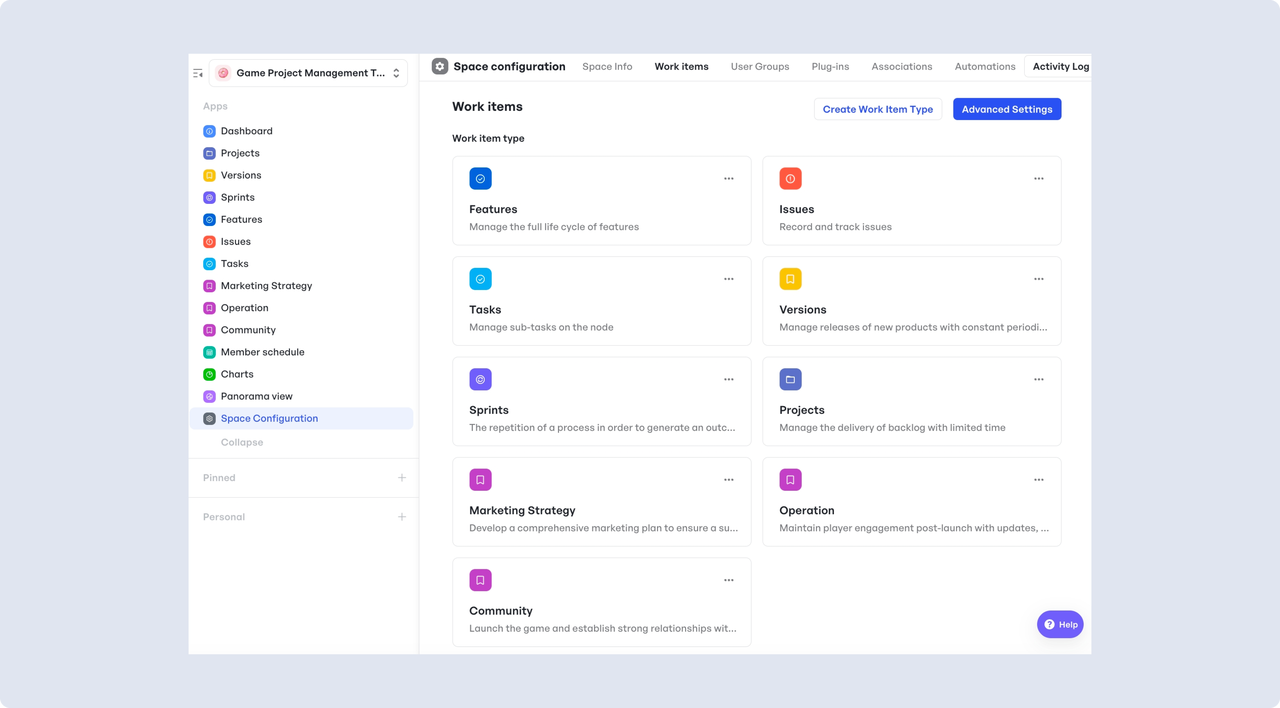
250px|700px|reset

Game Project Management Template, Meegle
Visualized Workflow Engine
Whether you're building new characters or updating scenes, Meegle standardizes workflows across every phase, from design and modeling to testing and launch.
Each step is visualized through connected nodes with clear task ownership, deadlines, and cross-team dependencies. Every discipline’s contribution is mapped into one intuitive, unified flow. As artists iterate on models, developers sync code in parallel, with full visibility into how each part moves the build forward.
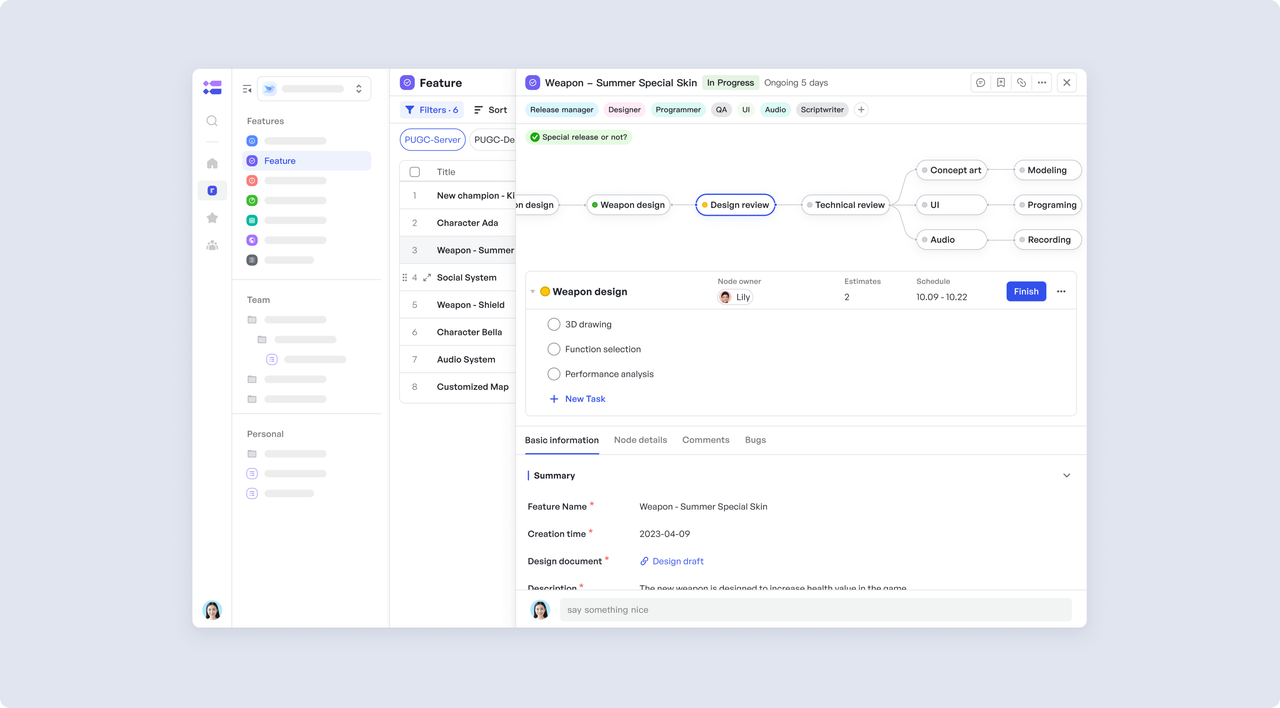
250px|700px|reset

Workflow Engine, Meegle
Adaptive Roadmap
No more surprise domino effects. Break complex epics into crystal-clear, visually mapped deliverables. Now it’s easy to see how a specific weapon links to a scene, a mechanic, or a narrative arc.
Roadmaps adjust in real time as responsibilities shift or deadlines move. Managers can spot bottlenecks early and resequence work before delays impact the build.
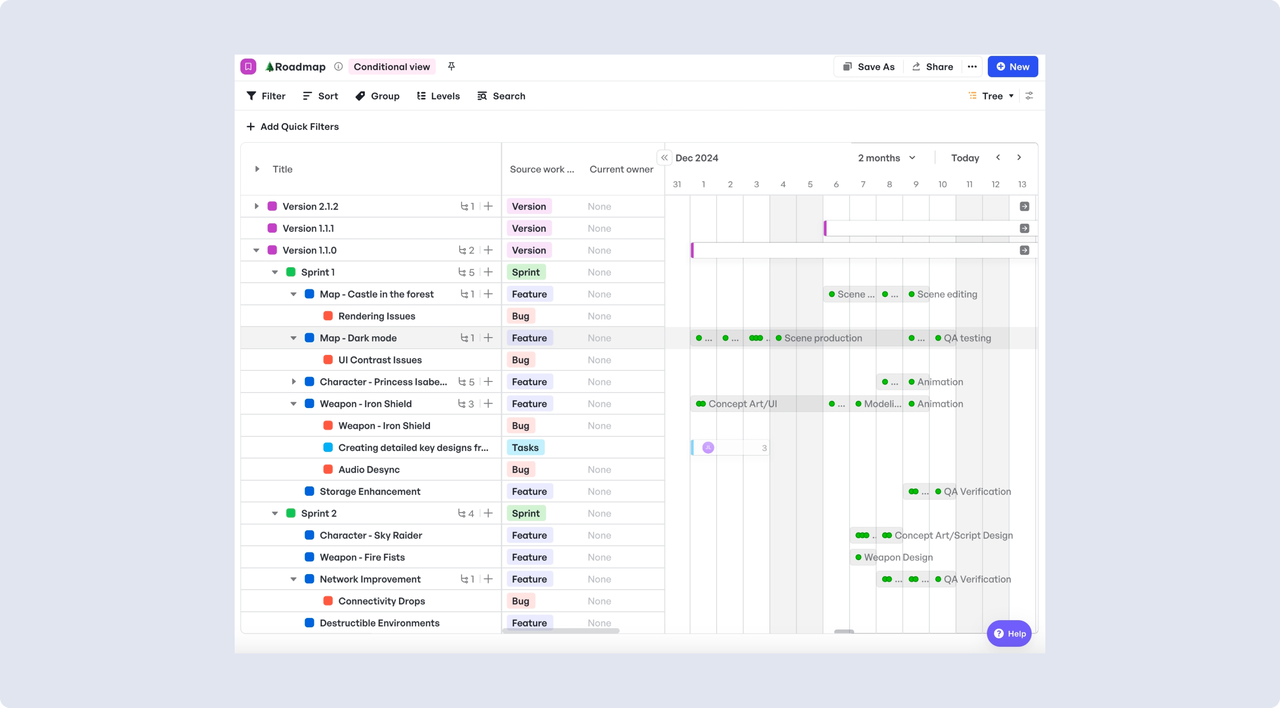
250px|700px|reset

Game Development Roadmap, Meegle
Auto-Sync Intelligence
Meegle's automation keeps everyone in lockstep through every twist and turn. When a designer updates a gameplay ability, connected tasks automatically trigger real-time notifications across impacted teams, ensuring that timelines and dependencies adjust without manual follow-up. For live service games, seasonal updates drop into tightly coordinated sprints, so content lands on time without last-minute chaos.
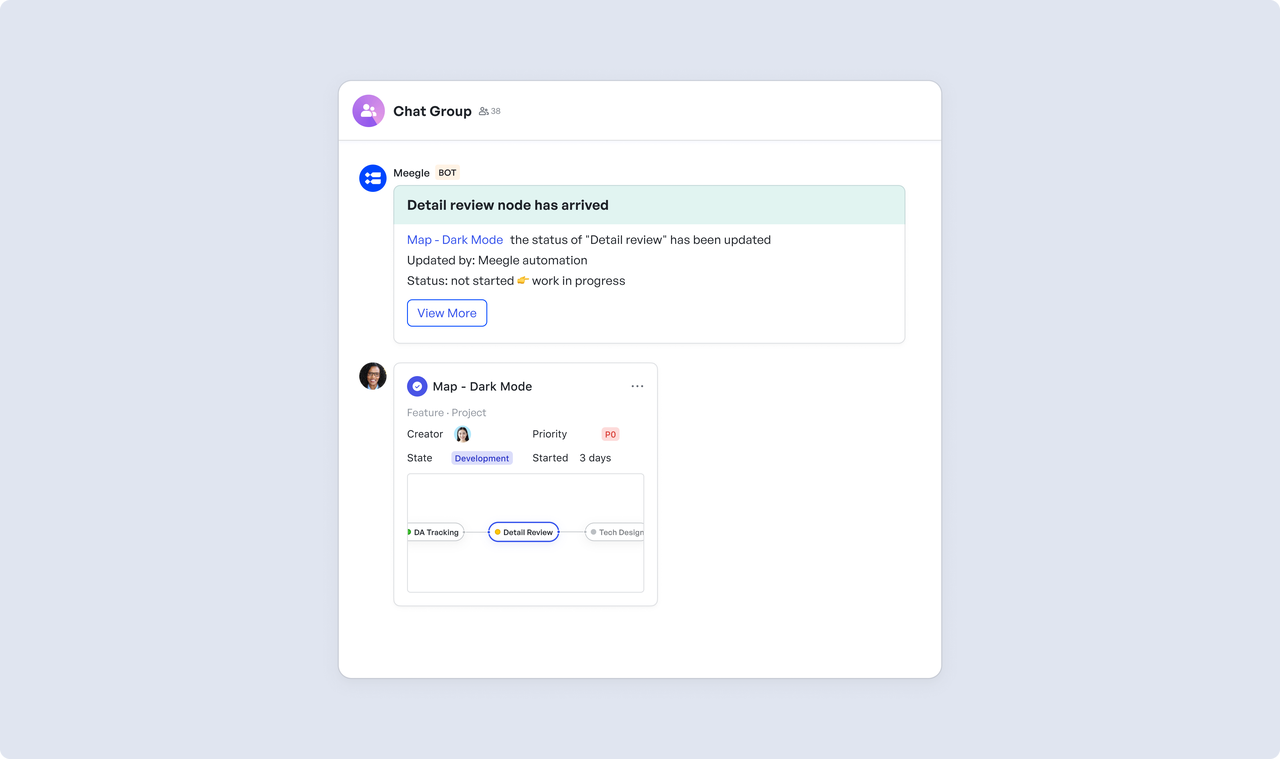
250px|700px|reset

Automated Notifications, Meegle
Resource Optimization
Meegle’s dashboard acts as your team’s pulse checker. With a unified view of team workloads and availability, resourcing becomes effortless. See who's burning out and who has bandwidth, then dynamically reassign work.
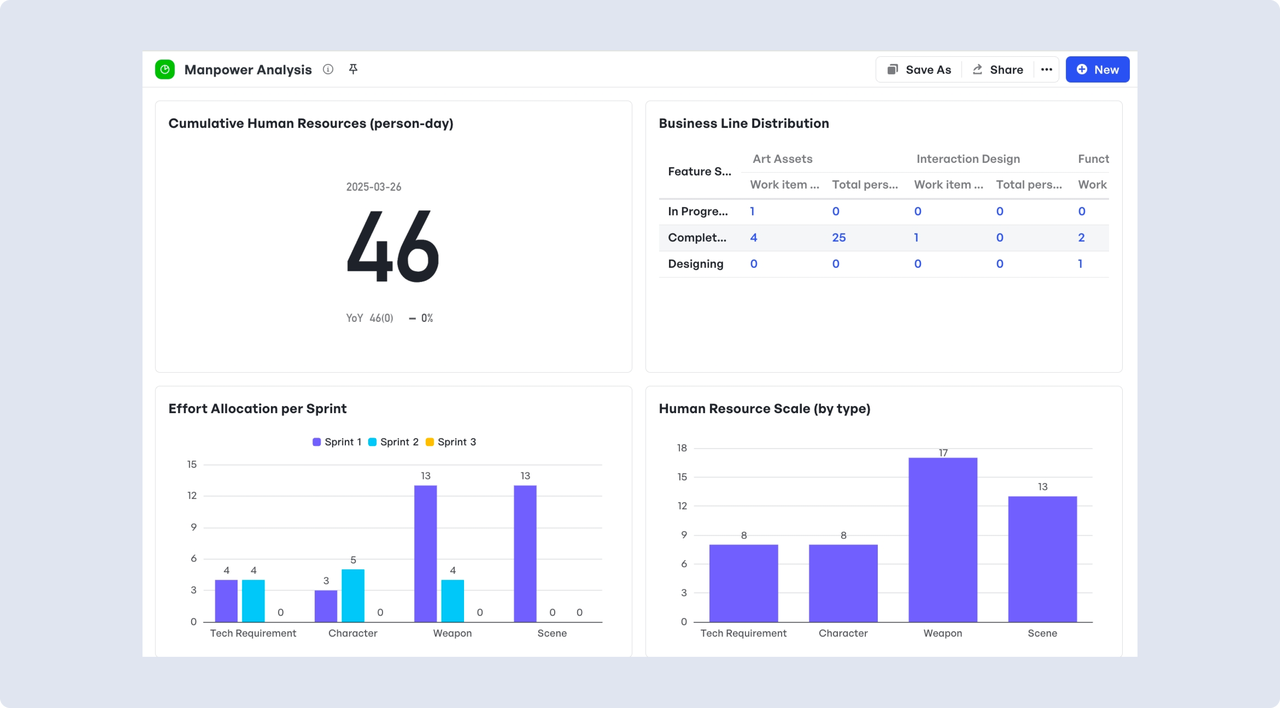
250px|700px|reset

Manpower Analysis, Meegle
Why Studios Choose Meegle
Meegle isn’t just another project tool—it’s built for the pace and complexity of game development projects. With automation, flexible workflows, and deep dependency mapping, studios use Meegle to:
- Ship faster with fewer miscommunications
- Adapt quicker to creative pivots and seasonal demands
- Optimize resources to avoid burnout and budget overruns
- Maintain immersion through cross-team alignment
Meegle has been a game-changer for our projects. I love how its features make it easy to visualize everything in one place. It’s incredibly helpful to have a clear view of the project’s progress and the goals we’re working toward, allowing everyone on the team to stay aligned and focused.
-- Khiêm Trần, Project Manager of Skylink Studio
Ready to Level Up?
From the indie rebels to the AAA heavy hitters, Meegle is helping elite game makers transform creative chaos into their greatest superpower.
Ready to ship your vision to the world? See how Meegle can level up your studio today. 🎮✨




